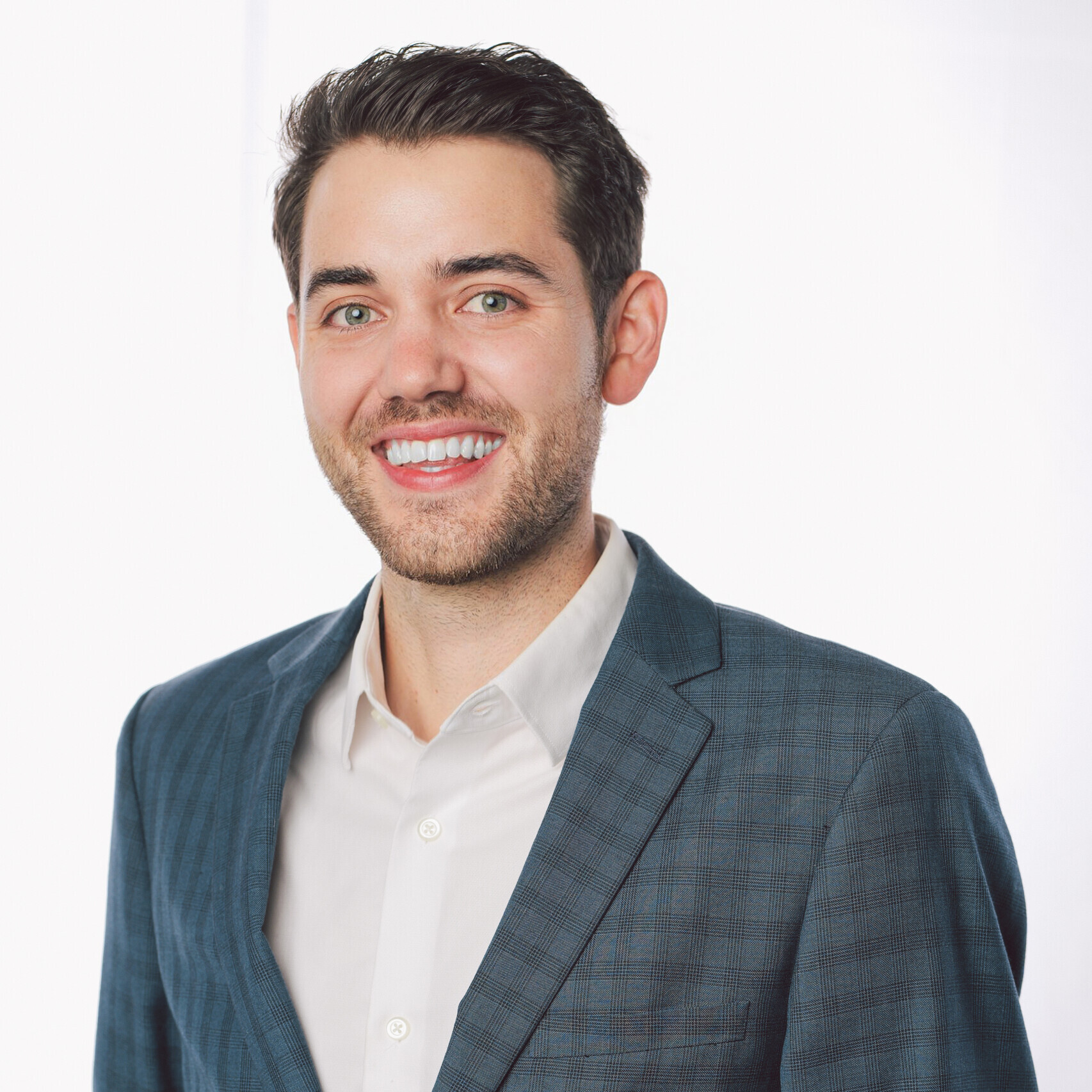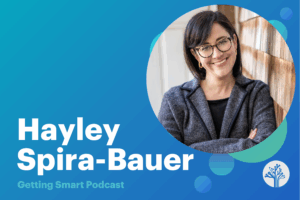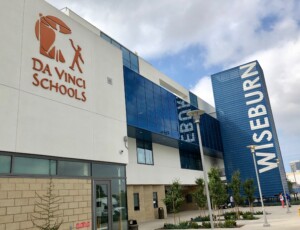Town Hall Recap: Sector Pathways
Key Points
-
The integration of STEM across all sectors in the revised Career Clusters framework encourages students to apply technology in diverse fields, fostering adaptability and interdisciplinary skills crucial for future careers.
-
Innovative programs like SparkNC and collaborations with local industries highlight the importance of real-world learning experiences, empowering students to explore and succeed in emerging high-tech and sustainable job markets.

This session covered the addition of the Career Clusters Appendix to our New Pathways Handbook, a closer look at leading pathways programs organized around the revised Career Cluster Framework from Advance CTE. Mason and Shawnee highlighted key drivers like generative AI and climate adaptation, emphasizing the shift towards a skills-first economy.
A highlight was the interactive exercise where participants brainstormed future job titles and roles, reflecting on trends ranging from declining trust in media to the rise of e-bikes. These insights touched on everything from transparency to the creation of new roles like Environmental Issues Impact Auditor, stressing the importance of preparing students for evolving career landscapes.
Lynn Moody from SparkNC shared her impactful work in expanding high-tech learning opportunities for students in North Carolina, demonstrating how technology can be integrated across career paths. The discussion also covered innovative programs in sectors like healthcare, agriculture, and business, offering real-world learning experiences. We express our gratitude to all our guest speakers for their invaluable contributions. Watch the recording and view the slides below!
Outline
- Introduction and Overview
- Key Drivers Shaping the Future
- Revised Career Clusters Framework
- Spotlight on Innovative Pathways
- Building and Moving: Sector Highlights
- Cultivating Resources: Agriculture and Energy
- Business, Starting, and Scaling
Introduction and Overview
Mason Pashia: Welcome to another Getting Smart Town Hall. I’m Mason Pashia, and today we’re going to talk a bit about the career clusters used by O*Net and various education CTE leads. They recently received a revision from Advanced CTE, and we’re going to discuss that. Then, we’ll look at how this revision has informed a recent addition to our New Pathways Handbook, the Career Pathways Appendix.
Before diving in, I’ll talk briefly about the current state of the world. I’ll go quickly, as we have an interactive activity coming up in about three minutes, which may differ a bit from our usual town hall format.
Key Drivers Shaping the Future
Mason Pashia: Here are some drivers that continue to appear in our research over the last few years. They are changing the fabric of society, the types of jobs available to young people, and the world they’ll enter.
One key driver is generative AI and decentralized systems under the emerging technology umbrella. We have a guest today who will speak on this topic, which we’re excited to feature. Another is climate adaptation, with increased federal spending and global challenges that are more complex than ever, as well as rapid innovation, particularly in manufacturing, construction, and other areas.
Community is also a new driver, encompassing new ways of organizing and new civic imperatives. This is something we’re all feeling as October comes to an end and significant events approach. We’re also entering a skills-first world, with a focus on hiring based on portraits of learners, badging, community alignment, and the critical question of reskilling—how do we help people stay nimble and continue growing?
Moving on, we have next-gen economics, which is centered on value creation and the rise of entrepreneurship, as well as the creator and attention economy. Finally, in health, there’s an increasingly aging population, innovations in health and wellness, and a growing awareness of how interconnected everything is.
These factors shape our world constantly. A while back, we had Thomas Homer-Dixon on the podcast, where he talked about the “ingenuity gap,” referring to the fact that our problems are getting more complex as civic capacity declines—a challenge we continue to face. Education’s core role aligns with these themes: understanding that problems are becoming more complex and fostering civic capacity in young people to meet these challenges.
Mason Pashia: Here’s some data on the fastest-growing labor sectors. Many different charts track this, and they tend to shift year by year. COVID disrupted many of these trends, with rapid growth in sectors that experienced recovery after the pandemic. But as you’ll see, healthcare support remains significant, as do healthcare practitioners and technical roles. Various science, architecture, and engineering roles are also growing, as well as personal care and service jobs.
Some of our CTE programs and existing pathways address these fields, but with things changing so fast, we must integrate durable skills, transferable skills, and other sector knowledge into these programs.
Mason Pashia: Now, let’s do a little exercise. If you’re driving, please do this in your head—but thanks for joining us if you are on the road. This exercise is called, “So you want to be an entrepreneur.” You’ll see nine circles, each representing a trend. Green circles are increasing, and red circles are declining.
These trends cover a broad spectrum, from declining trust in media to rising popularity of e-bikes and scooters. Considering the future ahead, it’s fun to imagine jobs that could emerge from these trends. Over the next three to five minutes, I encourage you to pick one of these bubbles and use a prompt, like the one I just dropped in the chat, to envision ten future job titles and their core responsibilities. You can use an AI tool or simply brainstorm. Let’s come up with a list of jobs that may not yet exist but could be on the horizon.
Keep the ideas coming! This exercise is meant to get us thinking about the future. While some titles might sound a bit out there, they offer a glimpse into potential roles and responsibilities in a collaborative, health-focused, and trust-driven future.

Here are some of the generated job titles:
– “Post Social Security Fund Manager”
– “Leftover Alcohol Recycler 🙂”
– “People Engagement Expert (I think this already exists)”
– “Trust Architect. Core Responsibilities: Design and implement transparent systems for content verification. Develop ethical frameworks for news organizations. Collaborate with AI systems to detect bias and manipulation in real-time reporting.”
– “Memory Restoration Therapist”
– “AI Manager- manage AI development and usage”
– “People Repurposing Technician”
– “Fun Factor Advisor”
– “Alcohol-Free Experience Designer – Create alcohol-free experiences, products, and events for hospitality and entertainment industries as demand for alternatives grows.”
– “Data analysis and visualization! (for all of them)”
– “Vibrant Workplace and Health Advisor”
– “AI Overlord”
– “Battery Lifestyle Manager”
– “Human Dynamics Coordinator”
– “Aging-in-Place Designer”
– “Human-AI Collaboration Designer”
– “Learning Layout Designer”
– “Urban Mobility Planner”
– “Trust in Media: Reputation Management Specialist. Works on strategies to maintain and enhance the public image of organizations or individuals. Content Integrity Analyst. Analyzes media content for accuracy, bias, and adherence to ethical guidelines. Reputation Management Specialist. Works on strategies to maintain and enhance the public image of organizations or individuals.”
– “Information Forensics Analyst”
– “Space utilization specialist. Hybrid Experience Designer. Smart Building Operations Manager”
– “E-Mobility Experience Designer”
– “End-of-Life Transition Guide”
– “Forever 21 to Forever Home Transition Director”
– “Public Trust Advocate. Engages with communities to promote transparency and accountability in media practices.”
– “Retirement Partner Placement”
– “Sustainable Food Systems Engineer”
– “Ethical AI Mediator. Responsibilities: Act as a liaison between AI developers and users to ensure AI systems align with ethical standards. Mediates discussions on privacy, fairness, and transparency in AI.”
– “Bicycle Urban Planning Architect”
– “With the fall in the trust in media: Blockchain Content Verifier, Misinformation Analyst, Community Trust Token Manager, Cryptographic Proof Developer”
– “AI Ethics Officer”
– “Talent Analytics Manager”
– “Corporate Architecture Home redeveloper”
– “Augmented Reality Experience Designer”
Shawnee Caruthers: I think we can volunteer someone. I’d love for Andy to share his thoughts on transparency.
Andy Lott: I’ve been thinking about our world today—what’s real, what isn’t, and how we can be transparent about that. It’s essential to help young people understand that certain things can be both real and AI-generated, and it’s okay to accept this duality.
Mason Pashia: Absolutely. Thank you, Andy. Kyra, would love to hear your thoughts.
Dr. Kyra Caldwell Templeton: Thank you! Good afternoon, everyone. I came up with an idea that I haven’t added to the chat yet: Environmental Issues Impact Auditor. I’m collaborating with Atlanta Public Schools, Pirelli Tires, and an organization called The Ray, which is researching zero-emission solutions along Georgia’s Ray Highway. Many of the jobs related to their work didn’t exist five or ten years ago. Preparing students for roles that don’t yet exist is crucial, and that’s why I find this exercise so valuable.
The partnership with The Ray and Pirelli gives us opportunities to explore sustainable solutions, and roles like environmental impact auditor or sustainable food systems engineer are part of the future.
Mason Pashia: Thank you so much, Kyra. Your comments align with a lot of what we’ll spotlight today. I appreciate you sharing.
Revised Career Clusters Framework
Mason Pashia: Here’s what I mentioned earlier: the revised Career Clusters framework from Advanced CTE. It launched last week after a period of public review, and the changes are interesting. For instance, STEM is now embedded across all sectors rather than being isolated as a single pathway, following industry feedback that STEM skills should be integrated into various fields rather than set apart.
They also added energy, echoing Kyra’s point about the importance of energy and sustainability. The cross-cutting clusters around the framework, such as digital technology, entrepreneurship, management, marketing, and sales, demonstrate that these skills are vital across all career paths. Embedding entrepreneurship, for example, is about helping students create and shape the future.
Josh Reppun: About two months ago, my team at What School Could Be went through a fantastic process, guided by ChatGPT, to reimagine our job titles. We generated a wide range of potential titles, then refined them until each team member found a title that felt right. This process allowed us to truly own our roles, rather than simply filling a position. It was transformative, and I think there’s a lot of potential for young people to benefit from similar exercises in which they create and own their job roles.
Mason Pashia: I love that, Josh.
Shawnee Caruthers: The outer components of the framework, like hospitality, supply chain, and others, previously focused only on specific jobs, limiting learners’ ability to explore various career paths. This new model emphasizes durable skills and adaptability, giving students the tools they need for an interdisciplinary world. The framework promotes entrepreneurial thinking, even for those who don’t work independently. I appreciate how it blends technical competencies with forward-thinking skills that help learners increase social capital as they progress along different career paths.
Mason Pashia: Exactly. In our New Pathways Handbook, we organized an appendix around this new framework, which we’ll discuss more in the second half of today’s town hall. These clustered groupings, like “building and moving” for supply chain and manufacturing, show the permeability between some sectors, allowing students to switch roles within a broader industry. This approach encourages students to think about the problems they want to solve rather than limiting them to one specific job path.
If you’ve visited our handbook, you might have seen that we added an appendix a few weeks ago, filled with examples from schools organized by these clusters. We’re continuously updating it, so if you have new examples, please share them with me. And, Johnny, if you could drop the link to the handbook in the chat, that’d be great.
Spotlight on Innovative Pathways
Mason Pashia: Now we’re moving into a discussion on specific sectors. We’ve previously published content on education and healthcare, and we’ve held town halls dedicated to both topics. There are many impressive examples of healthcare programming happening both in and out of school, as well as education pathways for students. Last year, we heard about apprenticeship programs for educators across the country. We also discussed technology apprenticeships, which remain relevant since technology is one of those cross-cutting clusters.
Shawnee, would you like to introduce our next guest?
Shawnee Caruthers: Absolutely! One of the things I love about town halls is our chance to bring friends together for meaningful conversations. Today, we’re thrilled to welcome Lynn Moody from SparkNC. Lynn, after our futures exercise, I asked ChatGPT to come up with a future job title that fits your work, and it came up with “Innovation Pathways Architect.” Feel free to update your LinkedIn with that one! But seriously, the work you and the SparkNC team are doing to empower students across North Carolina is inspiring. Thank you for being here today to share more.
Lynn Moody: Thank you! First off, I love the “circle” graphic because it highlights how digital technology intersects with all career fields. At SparkNC, we’ve been on this journey for about three years. It took us a year to secure funding from the General Assembly, then another year to hire staff and develop a platform. This past year has been our first full year of implementation.
Our mission is to expose students to high-tech jobs that will dominate the future job market in North Carolina and beyond. When we brought together 100 students for a two-day conference to envision SparkNC, they shared their perspective on high-tech jobs. Many believed these roles were only for the class valedictorian. Our goal is to change that mindset and make these opportunities accessible for all students, regardless of their academic or disciplinary background.
Our vision is to ensure every student has the skills needed to thrive in a tech-transformed world. While our initial focus was on preparing students for high-tech fields, we found that many are more interested in applying technology within other careers, like healthcare.
We developed a platform with over 70 learning units across categories such as artificial intelligence, computer systems engineering, game design, UI/UX design, software development, cybersecurity, and data analytics. Each learning unit is modular, stackable, and typically involves 15-20 hours of work. Some are online, others involve live instruction from experts in places like the Research Triangle Park, and some are hands-on or experimental experiences.
Students can combine six units from any path to build their own course, which can count as a high school elective or an independent study. We even incorporate durable skills and ethical considerations into each unit, and students reflect on their progress after completing their capstone projects.
This year, we introduced the Spark Ambassador program to ensure student voice is central to everything we do. Our ambassadors lead their communities and advise us on SparkNC programming. The teachers and coaches in each lab are the heartbeat of the program, providing hands-on support. We design our labs to look clean and modern—like a professional tech workspace—to help students visualize themselves in these careers.
Our commitment to our students is to provide industry-relevant learning experiences, connect them with high-tech professionals, and help them develop durable skills. And to our employers, we promise to produce homegrown talent so that students, even in rural areas, can find meaningful, tech-infused work locally. When people visit, they often say, “I wish I’d had this when I was in school.”
Shawnee Caruthers: Thanks, Lynn! I’ll kick off with a couple of questions, but please feel free to drop additional questions for Lynn in the chat. Lynn, is SparkNC’s curriculum able to be integrated with other career pathways, or is it specific to technology?
Lynn Moody: Great question! Our learning units align with other career pathways, so while we cover high-tech fields, we also address broader applications. For example, in our “AI and Agriculture” unit, students might interview a local farmer, identify a problem, research AI solutions, and return to the farmer with ideas like AI-driven pesticide management. This project offers a real-world application of technology within agriculture.
One of our popular units is “Beauty in the Box,” which intersects with the arts and explores the fusion of technology and creativity.
Shawnee Caruthers: I love that, especially how you prioritize student agency. In the data analytics example, you mentioned students discover their interest after giving it a try. How do you encourage students to explore paths they may not initially consider?
Lynn Moody: We owe a lot to our Spark lab leaders, who introduce students to new concepts. We also organize live experiences, like the conference we held last summer, where we took students on a field trip to different tech companies. One student was initially reluctant to visit SAS Institute, a world leader in data analytics, and asked to go to Apple instead. But after hearing scientists discuss how they use data to solve global issues, he was captivated. Exposure is key; many students wouldn’t pursue data analytics unless they had guidance or saw its impact first-hand.
Our goal is to help students make informed career decisions, whether they choose to enter tech or not.
Shawnee Caruthers: I completely agree. Anna mentioned in the chat that “data needs a rebranding campaign.” Sometimes, the buzzwords turn students off before they even give it a chance. Jennifer Lampkins asked how SparkNC fosters empathy in design, interviewing, and problem-solving.
Lynn Moody: Great question! Our coaches and ambassadors play a significant role in this. We prioritize student-to-student learning and value student feedback. For example, our ambassadors recently participated in a two-day retreat where they learned about conditions for learning, rigor, and relevance, and provided feedback on SparkNC labs. Our learning design team then revised certain units based on the students’ insights.
We also offer “teamships,” where students work together on real-world problems, often in collaboration with companies. For example, one team recently worked with Dell to brainstorm ways to encourage social activities among tech employees. The students asked Dell about their turnover rate and, finding it low, questioned why they were concerned with social activities. Sometimes students bring a fresh perspective that challenges conventional thinking.
Lynn Moody: We’re currently hosting an app challenge, and our students said, “We want an app to keep track of all the Spark activities we can participate in.” With so many hackathons and events, they wanted a way to stay organized. They can earn Spark points or complete learning units through these activities, whether they’re before school, after school, or during independent study. They don’t have to follow a course structure—students can complete their six units for high school credit anytime throughout high school.
Right now, students across districts are competing to design the new app, and the top four teams will go to Apple, where leaders will pick the final design for SparkNC.
Mason Pashia: You mentioned that your community and career partners help you stay updated on emerging opportunities. Do you have any tips for other sectors on staying informed? How do you keep business partners engaged in these conversations?
Lynn Moody: We started a Business Advisory Council with seven members, plus a board of directors that includes business partners to guide our work strategically. We meet with our Business Advisory Council regularly, mostly virtually, as they’re located across the state and country. They help us stay informed on trends and provide feedback on our work.
We also have a “menu of partnership” on our website, which offers various ways for business partners to engage with us. We encourage them to participate as judges, mentors, or competition panelists. Our Advisory Council plays a critical role, but we also actively reach out to engage our partners in specific events and projects.
Mason Pashia: That’s fantastic. Thank you for sharing! And thank you to the SparkNC team for joining us today. Lynn and her team will be available in the chat if anyone has more questions. Now, we’ll move on to discuss other sectors.
If anyone in the audience has examples they’re excited about, please share them in the chat. We’d love to feature them in our publication.
Building and Moving: Sector Highlights
Mason Pashia: Let’s dive into the “Building and Moving” category, which includes advanced manufacturing, construction, supply chain, and transportation. These are all rapidly growing fields with high demand and labor shortages.
One exciting example comes from the Connecticut Technical Education and Career System (CTECS), a network of CTE programs in Connecticut. They have a unique program where local businesses collaborate to build a sustainable smart house. Each business contributes different components, like heat pumps or solar panels, allowing students to gain experience in green construction.
Another upcoming example is the Tacoma Maritime Center in Washington, which is a partnership with the local port and indigenous leaders. This collaboration will provide unique opportunities in the maritime and environmental sectors.
A third example is from Porterville School District in California, which partnered with Porterville College and a local electric vehicle (EV) bus manufacturer. They recently received grants to add EV buses to their fleet, and students earn dual enrollment credit while learning to work on these electric buses. This program introduces students to electric vehicle maintenance, providing valuable skills in a rapidly evolving field.
Shawnee Caruthers: Creating experiences is crucial for students, and there are so many approaches to doing it. This next section focuses on sectors like arts, entertainment, design, hospitality, events, and tourism. I’ve had the chance to see some amazing examples across the country.
High School of the Recording Arts in St. Paul, Minnesota, is one example. It’s an alternative school centered around music, which draws students in. They integrate music into various subjects, teaching science, math, and more through music. The school even has a fully functioning recording studio where students can work on projects. During my visit, they offered me the chance to record a track in their studio!
The school also provides dedicated planning time for teachers to design pathways intentionally, and they partner with community members who come in to work with the students.
Another great example is Fort Osage in the Kansas City area. They converted an empty building into an event space and a coffee shop, creating real-world learning environments. Despite being in a rural area without much local industry, they used their resources creatively to provide students with valuable hospitality and event management experience.
Paseo Academy of Fine and Performing Arts in Kansas City, Missouri, is another remarkable program. Students audition for acceptance, then choose a major in areas like instrumental music, choir, dance, visual arts, or theater. Recently, they were preparing a production of “Beauty and the Beast,” and I saw how all the pathways—from dance to visual arts to English—came together to support the production. It’s an excellent example of interdisciplinary learning within the arts.
Mason Pashia: Those are some fantastic examples. I’ll keep moving for the sake of time, but please feel free to add any additional examples in the chat.
Cultivating Resources: Agriculture and Energy
Mason Pashia: The next sector is “Cultivating Resources,” which includes agriculture and energy. This area is dear to me, as it involves exciting work in fields like ag-tech and sustainable energy.
In California, we worked with the Wonderful Agriculture Pathway Program, which is funded by the Wonderful Company. This program provides scholarships, dual-enrollment college credits, and hundreds of hours of paid internship experience, all focused on agriculture and related industries. Students can get an associate degree and a pathway to work in the agriculture industry upon graduation.
In Colorado, they’ve introduced a Climate Literacy Seal that students can earn on their transcripts. It requires taking core courses in environmental science and completing real-world learning experiences related to climate. It’s great to see such initiatives that foster environmental awareness and practical skills.
Many schools across the country are also incorporating solar power projects, often as part of facility renovations funded by grants. These schools allow students to monitor energy use and savings, giving them hands-on experience with renewable energy technology.
Business, Starting, and Scaling
Mason Pashia: Our last category veers a bit from the traditional framework, combining financial services, entrepreneurship, marketing, and sales. This is all about business, starting, and scaling.
Shawnee Caruthers: I’ll highlight some examples from Kansas City. In one local high school, Winnetonka High School, students are about to start running a fully functional bank. This program involved navigating various regulations to ensure data security and legal compliance, but it will provide students with invaluable experience managing school funds and working in banking.
Mason Pashia: This is fantastic! We’ve seen similar hands-on business experiences from programs like the Knowledge Society and the National Foundation for Teaching Entrepreneurship (NFTE). They offer students the chance to engage in real-world problem-solving, using skills like data analysis and project management.
If anyone else has examples, please share them here. Shawnee and I are constantly looking to update our publication with new, innovative models.
Mason Pashia: Before we wrap up, I want to let everyone know what’s coming up. Please send any additional examples or ideas our way. Our next town hall will focus on credentialing experiences and skills—a topic we’ve been researching in-depth. We’ll send the invite out next week, and we look forward to another engaging discussion.
Thank you to Lynn and the SparkNC team for joining us, and to all of you for bringing such great energy today.
Shawnee Caruthers: Yes, thank you all! Hope you’re leaving hopeful and energized. Have a wonderful rest of the week.
Links:

Mason Pashia








0 Comments
Leave a Comment
Your email address will not be published. All fields are required.